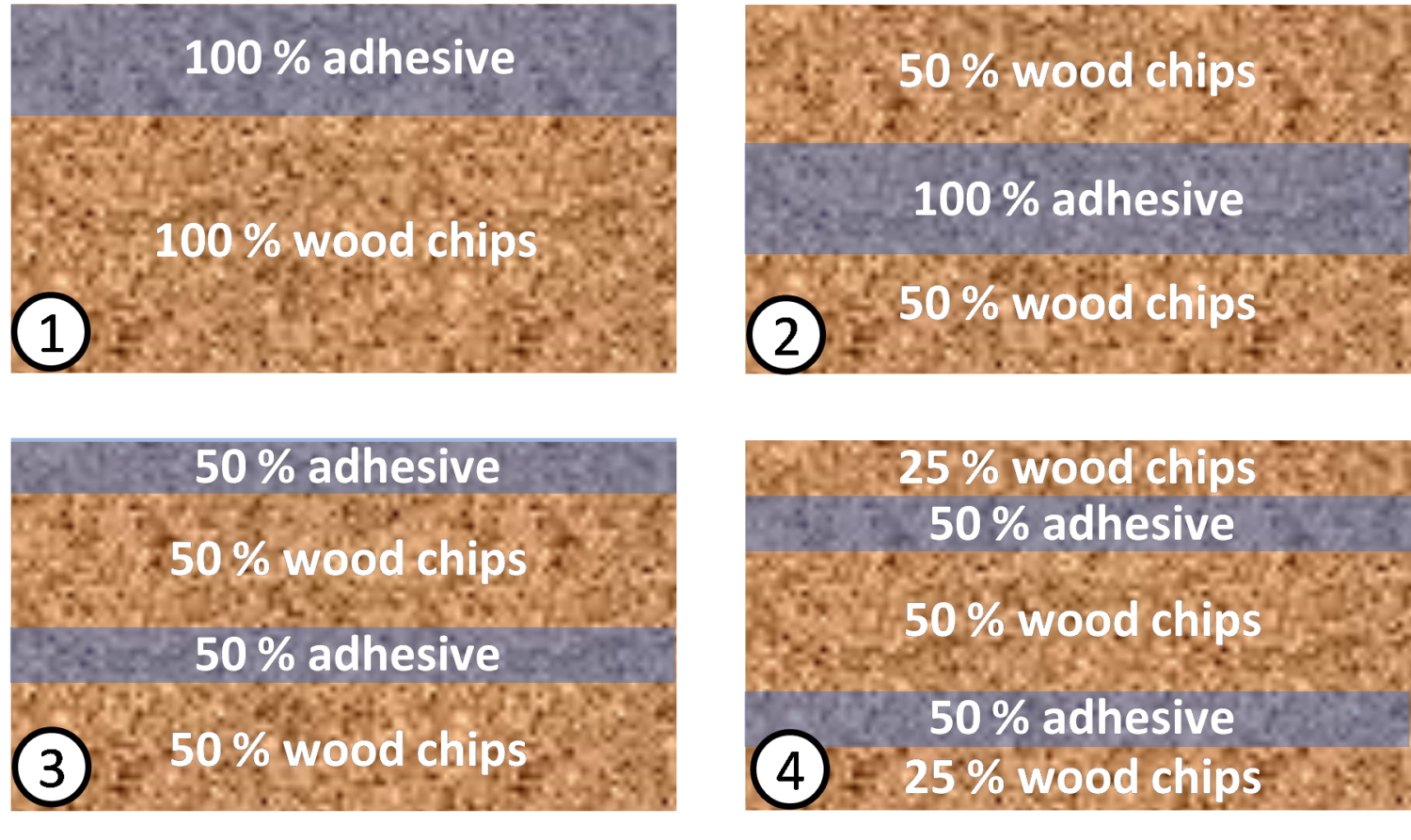Research Summary Report A08
Structural Timber by Individual Layer Fabrication (ILF)
[13.05.2022]
Asshoff, Carsten; Doctoral researcher;carsten.asshoff@wki.fraunhofer.de
Fraunhofer Institute for Wood Research Wilhelm-Klauditz-Institut WKI
The main goal of the project ’A08 – Structural Timber by Individual Layer Fabrication (ILF)’ is to develop a process to additively manufacture large-scale, wood composite objects with a maximum content of wood material and strength values suited for applications in construction. In the course of the project multiple process variants and material combinations are explored. For this, the necessary machinery is developed in iterative steps and the mechanical properties of the resulting objects as well as the geometric capacity of the processes are investigated. Finally, multiple demonstrators are fabricated for showcase purposes.
Summary
Working group Bunzel is researching the process behaviour and properties of the adhesive and wood chips, which are to be used for the ILF process. A polymeric methylene diphenyl diisocyanate adhesive (pMDI) has been found to be very processable due to its low viscosity and surface tension. Therefore, further tests were carried out with the pMDI, in which the adhesive to wood chip content was varied. For contour accuracy the adhesive is applied onto the wood chips from above and locally, where it is required in terms of component geometry (Fig. 1). Studies were carried out in which the adhesive distribution was investigated. Here, knowledge is required on the distribution in the plane, as well as in the cross-sectional direction. The investigation focused on the ability of such a individual layer (IL) to be built up from several adhesive layers for better distribution in the cross-section and on the resulting properties (Fig. 2). Insofar as the adhesive content is reduced, application methods such as 1 or 2 are no longer sufficient to ensure that all wood chips are bound. In this case, a layering method such as 3 or 4 must be used.
In addition, the adhesive distribution in plane must be determined. On the one hand, it depends on how much adhesive applied locally. A higher adhesive amount spread more in plane. Another factor is the distance between the application paths. If the amount of adhesive is reduced and the distance are too large, the adhesive will not flow together. This results in areas of unbound chips, which leads to a reduction of the mechanical properties.
Current state of research
Different adhesive contents and application techniques were investigated to determine their effects on manufacturing as well as their mechanical properties. Further influencing factors for the adhesive distribution and therefore accuracy are the density of the IL and pressing temperature. Experiments show, that a lower pressing temperature allows the adhesive to spread sufficiently in width and depth before it cures. Thus, more wood chips are bonded. A higher pressing temperature leads to the opposite effect. However, a higher temperature can be used to increase the contour accuracy by ensuring that the adhesive remains in place.








